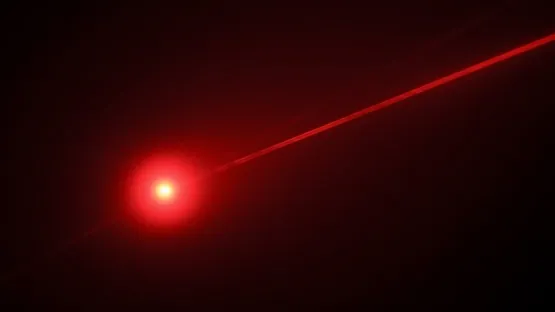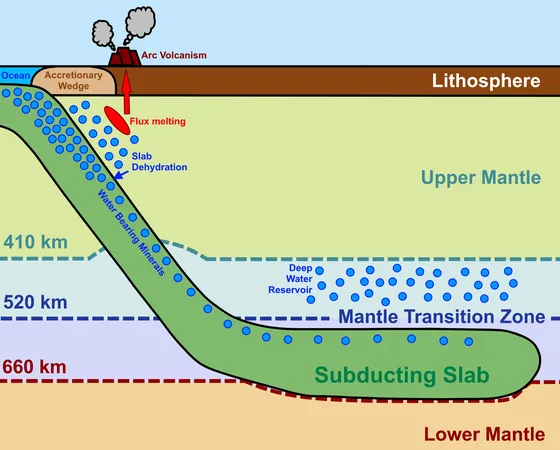
Revolutionary Technique Transforms Noisy Lasers into Quantum Powerhouses
2025-05-27
Author: Liam
In a groundbreaking development, scientists have unveiled a method to convert erratic lasers into stable beams that challenge the boundaries of classical physics, paving the way for advanced photonic technologies that demand both high power and utmost precision.
Lasers are indispensable across science, industry, and medicine, but boosting their power often introduces "noise"—unpredictable intensity fluctuations that can sabotage applications requiring reliable and consistent light.
Leading the research, teams from Cornell University and the Massachusetts Institute of Technology (MIT) demonstrated a remarkable technique to transform these noisy, amplified lasers into ultra-stable beams using innovative optical fibers and specialized filters, as detailed in the May 14 issue of Nature Photonics.
Nicholas Rivera, an assistant professor at Cornell Engineering and co-leader of the study, expressed astonishment at the noise reduction achieved: "What was super surprising is that the noise is so low that there’s no classical laser beam that has those same properties. It’s in a quantum state that has no classical analog."
Typically, quantum light is produced in controlled environments using low-power, nonamplified lasers. This new research marks a milestone, illustrating how high-noise, amplified light can be reshaped into an "intensity-squeezed" state. In this state, fluctuations in photon counts dip below a fundamental limit set by quantum mechanics.
Central to this discovery is a phenomenon the researchers coined "noise-immune quantum correlations." To mitigate the amplification of noise, they passed laser pulses through nonlinear optical fiber, allowing complex interactions of light waves. A specific process known as four-wave mixing redistributes energy among varying light colors, creating vital correlations.
The team employed a programmable spectral filter to select the most stable frequency combinations. Impressively, some of these filtered outputs recorded noise levels 30 times lower than the original beam while still preserving intense peak outputs of up to 0.1 terawatts per square centimeter.
Rivera's inspiration for this project originated from a practical lab need: the desire for quantum light without the exorbitant cost of specialized low-noise systems. "This means that there are now many more laser sources available for generating quantum light," he explained. "Amplified sources are incredibly common and offer a cost-effective means to build high-power lasers."
To clarify their observations, the researchers developed an innovative model that extracts quantum noise predictions from classical simulations of the laser's dynamics, enabling them to navigate around the inherent noise in their system. This model serves as a blueprint for other scientists to apply this cutting-edge technique to their own laser setups.
Rivera’s enthusiasm for expanding this method is palpable: "We demonstrated this at modestly high intensities, but today’s lasers can achieve brightness levels that are orders of magnitude greater." He intends to integrate this technique with other laboratory methods capable of producing ultra-powerful lasers.
Potential applications stretch well beyond laboratory confines, targeting advanced communication systems such as cross-ocean fiber-optic cables that leverage amplification techniques to maintain signal integrity. Rivera remarked, "Commercially, it’s an extremely exciting prospect."
This significant research involved collaborations with experts from Boston University, Harvard, Stanford, the Technion-Israel Institute of Technology, and the University of Central Florida, and garnered support from the Swiss National Science Foundation, MathWorks, the U.S. Department of Defense, and the U.S. Army Research Office.









 Brasil (PT)
Brasil (PT)
 Canada (EN)
Canada (EN)
 Chile (ES)
Chile (ES)
 Česko (CS)
Česko (CS)
 대한민국 (KO)
대한민국 (KO)
 España (ES)
España (ES)
 France (FR)
France (FR)
 Hong Kong (EN)
Hong Kong (EN)
 Italia (IT)
Italia (IT)
 日本 (JA)
日本 (JA)
 Magyarország (HU)
Magyarország (HU)
 Norge (NO)
Norge (NO)
 Polska (PL)
Polska (PL)
 Schweiz (DE)
Schweiz (DE)
 Singapore (EN)
Singapore (EN)
 Sverige (SV)
Sverige (SV)
 Suomi (FI)
Suomi (FI)
 Türkiye (TR)
Türkiye (TR)
 الإمارات العربية المتحدة (AR)
الإمارات العربية المتحدة (AR)